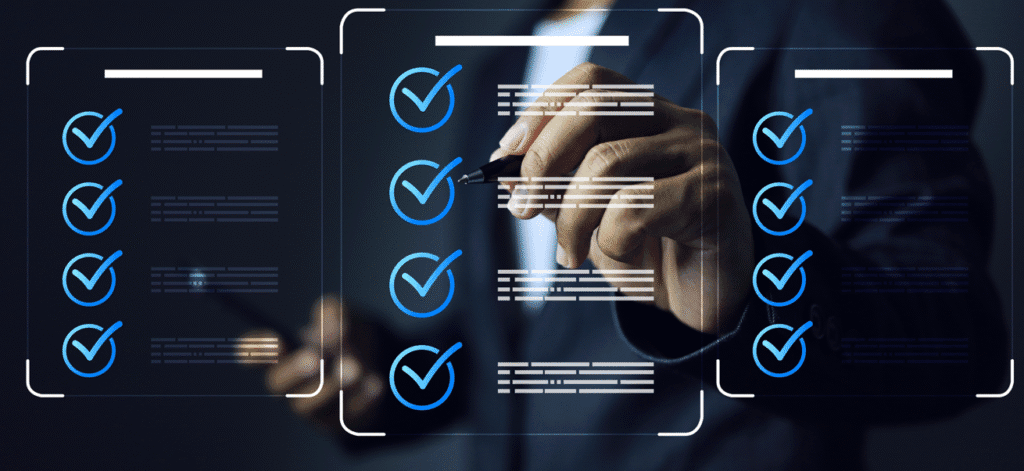In 2025, artificial intelligence is not just a tool used to increase productivity, it’s also a weapon. As deepfakes grow more convincing and machine learning systems become embedded in critical infrastructure, attackers are finding new ways to exploit AI, and the consequences are scaling fast.
From realistic synthetic videos to poisoned datasets, the digital threat landscape is being reshaped. And while businesses continue to adopt AI to improve operations, security teams now face a more complex challenge: defending against threats generated or enhanced by the very systems meant to increase efficiency.
Deepfakes: Real Fraud from Fake Faces
According to an article by Jackson Lewis in June 2025, “Deepfakes have exploded—some reports indicate a 3,000% increase in deepfake fraud activity. These attacks can erode trust, fuel financial crime, and disrupt decision-making.”
The United Nations has also sounded the alarm. In a July 2025 report, the UN’s International Telecommunication Union (ITU) called for urgent measures to counter AI-generated deepfakes.
AI Certs News, quoted: “This is no longer a future threat. Deepfakes are now influencing elections, spreading disinformation, and undermining truth at scale,” said Dr. Yuki Ando, UN AI Policy Chair
These hyper-realistic forgeries are no longer just internet novelties, they’re now tools for fraud, impersonation, and disinformation. The concern extends well beyond manipulated celebrity videos, criminals are using AI to clone voices, mimic executives, and even simulate live video calls to authorize financial transactions or manipulate internal systems. A single convincing video or audio clip can bypass traditional security measures and verification protocols.
According to the ITU, “ one survey found that 85 per cent of countries lack an AI-specific policy or strategy, raising alarms about uneven development and growing digital divides.”
The UN’s proposed solutions include embedding digital watermarks into AI-generated content and investing in technologies to verify the origin of audio, video, and images. These ideas are gaining traction, but implementation is still lagging behind the scale of abuse and misuse.
Data Poisoning: The Subtle Corruption of Machine Learning
While deepfakes are flashy and public-facing, another AI threat is data poisoning. Attackers are tampering with the datasets used to train AI models, introducing malicious patterns or corrupt labels that distort the model’s behaviour.
These attacks are not only on the rise, they’re also difficult to detect. Once a poisoned dataset is used to train a model, the vulnerabilities may remain hidden until exploited. For example, a manipulated image recognition system could be trained to ignore specific patterns, creating exploitable blind spots.
The National Institute of Standards and Technology (NIST) is now providing guidance to help mitigate these risks.
Automated Detection: The New Defensive Playbook
If AI is being used to attack, it must also be part of the defence. That’s the key message shared by former FBI cyber experts in a July 2025 interview with VentureBeat. Manual detection methods can’t keep up with the pace of synthetic attacks, therefore, defenders must begin automating their own detection and response strategies.
As quoted in the VentureBeat article: “If the bad guys are using AI, we the defenders have to also use AI.” In terms of advice for AI use, VentureBeat concludes: “trust, but verify.” Know the purview of your tools and solutions and have verified that they’re safe and trustworthy. When you build a solution, make sure your AI functions correctly and test the data to ensure it’s secure and clean.”
Prudent advice
- Train cybersecurity teams to understand AI at both a technical and operational level, not just as users of tools, but as active analysts of how those tools work and fail.
- Use AI to continuously monitor system behaviour, flag anomalies in real-time, and isolate compromised assets before damage spreads.
- Build proactive cybersecurity defences now. Don’t wait for standards to catch up. Conduct regular model audits, secure the supply chain of training data, and treat synthetic content as a legitimate threat vector, not a novelty.
Dual Forces: Two Sides of Generative AI
AI is no longer just powering productivity—it’s powering attacks. Deepfakes can mimic anyone. Poisoned data can sabotage intelligent systems from the inside out. And synthetic threats don’t operate on a 9-to-5 schedule.
Organizations need to adapt, not only by adding tools but by adjusting their mindset. AI threats are fast, flexible, and scalable. Defending against them means moving at the same speed.
The next generation of cyberattacks may not originate from rogue code or malware downloads. They may come from realistic voices, convincing video calls, or subtle distortions in the data you trusted. And the only way to stay ahead is to start treating these threats as real.
Resources
Aicerts News. (2025, July 11). UN urges global standards to detect and control AI deepfakes – AI CERTs News. AI CERTs News. https://www.aicerts.ai/news/un-urges-global-standards-to-detect-and-control-ai-deepfakes/
Lazzarotti, J. J. (2025, June 16). The Growing Cyber Risks from AI — and How OrganizationsCan Fight Back | Workplace Privacy, Data Management & Security Report. Workplace Privacy, Data Management & Security Report. Jackson Lewis. https://www.workplaceprivacyreport.com/2025/06/articles/artificial-intelligence/the-growing-cyber-risks-from-ai-and-how-organizations-can-fight-back/
Staff, V. (2025, July 8). Former FBI cyber experts on combating AI threats — and training tomorrow’s defenders. VentureBeat. https://venturebeat.com/security/former-fbi-cyber-experts-on-combating-ai-threats-and-training-tomorrows-defenders/
UN summit confronts AI’s dawn of wonders and warnings. (2025, July 16). UN News. https://news.un.org/en/story/2025/07/1165346
Need more info?
Take the next step—contact us today for a free compliance and cybersecurity strategy session to ensure your business is fully protected and compliant!
Our Cyntry experts can identify strategies to safeguard your data and systems. At Cyntry, simplifying the compliance journey and strengthening your security posture is what we do best.
Book a no-cost 30-minute compliance and cybersecurity strategy session at Cyntry.com.



